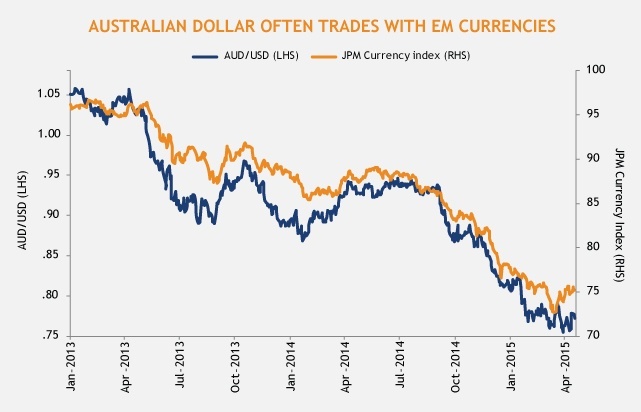The case for investing in emerging local currency debt over the long haul is well-documented: as developing countries improve productivity, their economies globalize and their currencies appreciate. [1]
But this is a long-term theory and the current reality may differ somewhat. Indeed, amid the current US dollar strength, many US dollar investors have been disappointed by EM local debt returns -- which have fallen more than 5% each year of the last two years.
But what happens if we look at emerging market (EM) local debt returns through the lenses of different currencies? In fact, the picture looks markedly better depending on the base currency. As we see more divergence in monetary policy amongst the central banks in Europe, Japan and Australia for example, the base currency an investor chooses will greatly influence returns in the coming months.
Increasingly, the risk profile of EM local debt will also depend very much on your base currency: it’s far less volatile for an Aussie investor to hold EM local debt for example, versus a US or British investor. That’s because the Aussie dollar is highly correlated with many EM currencies (many of the drivers for EM growth apply to Australia such as Chinese growth and commodity prices.)

In fact, since December 2013, EM local currency debt returned about 13% in euro while the same index in US dollars is down about 7%. This highlights the sharp fall of the euro versus the dollar rather than the performance of the underlying emerging market currencies.
Here are three key considerations for EM investing today:
- EM currencies may not initially seem like the most attractive investment in a rising US interest rate environment. However, for investors based in euro or yen, where accommodative monetary policy is likely to continue to weigh on the currencies, an EM currency strategy may be appealing.
- For US dollar investors, allocating to EM currencies (versus yen or euro) looks like it would provide better diversification for the near future, amid European and Japanese quantitative easing.
- Finally, the search for yield is likely to continue to support demand for higher carry instruments such as EM local currency debt.
So, when thinking about investing in EM local currencies, remember: “it’s all about that base.”
MALR013250
[1] See Kenneth Rogoff, “The Purchasing Power Parity Puzzle,” Journal of Economic Literature vol.34, no.2 (June 1996), pp. 647-68.; Bela Balassa,“The Purchasing Power Parity Doctrine: A Reappraisal,” Journal of Political Economy vol.72, no. 6 (1964), pp. 584-59; Paul Samuelson, “Theoretical Notes on Trade Problems,” Review of Economics and Statistics vol.46, no.2 (1964), pp. 145-154.
This blog post is provided for informational purposes only and should not be construed as investment advice. Any opinions or forecasts contained herein reflect the
subjective judgments and assumptions of the authors only and do not necessarily reflect the views of Loomis, Sayles & Company, L.P. Information, including
that obtained from outside sources, is believed to be correct, but Loomis Sayles cannot guarantee its accuracy. This material cannot be copied, reproduced or
redistributed without authorization. This information is subject to change at any time without notice. Market conditions are extremely fluid and change frequently.




